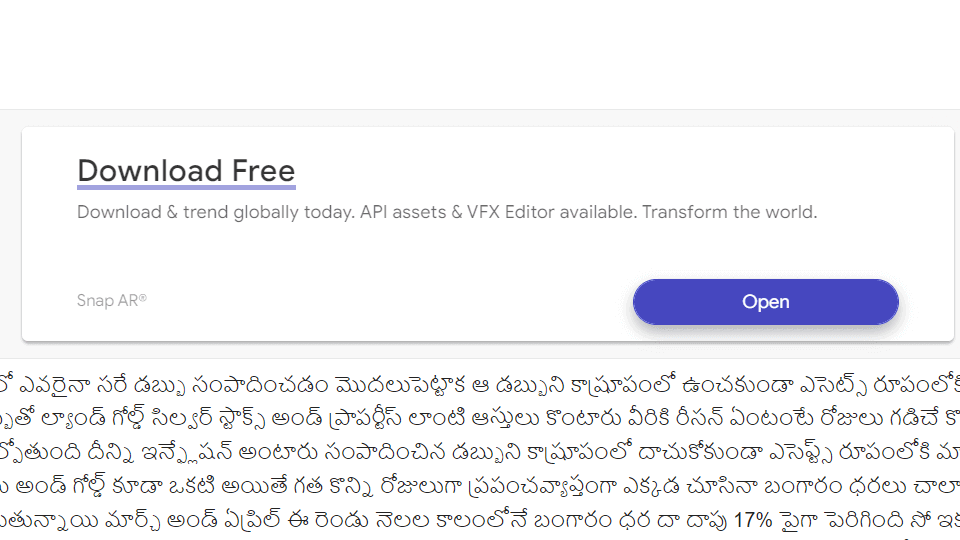Introduction
Monetizing your WordPress blog can transform your passion into a profitable business. With the right strategies, you can turn your blog into a reliable income stream, allowing you to earn money by sharing valuable content with your audience. Whether you’re a beginner or an experienced blogger, 2024 presents numerous opportunities to tap into monetization methods that are easy to implement and highly effective. From affiliate marketing to selling digital products, there are plenty of ways to monetize your WordPress blog without compromising the quality of your content or overwhelming your readers with ads.
As the digital landscape continues to evolve, it’s important to stay up-to-date with the latest trends in blog monetization. In 2024, bloggers are expected to take advantage of new tools, platforms, and strategies to maximize their revenue. By understanding and applying these methods, you can create a steady flow of income while maintaining the integrity of your blog. In this guide, we’ll explore the top strategies to help you monetize your WordPress blog and take your blogging efforts to the next level.
Whether you’re looking to make a side income or turn your blog into a full-time business, the possibilities for monetizing your WordPress blog are endless. The key is to implement the right strategies that align with your blog’s goals and your audience’s needs. In the following sections, we’ll walk you through proven methods that can help you start earning from your WordPress blog in 2024 and beyond.
Why Monetizing Your WordPress Blog in 2024 is a Smart Move
In 2024, monetizing your WordPress blog is more than just an additional income stream—it’s a smart business move. With the increasing number of people turning to blogs for advice, reviews, and insights, there has never been a better time to capitalize on your blog’s potential. The tools and platforms available today make it easier than ever to implement a variety of monetization strategies without requiring advanced technical skills. By choosing the right approach, you can effectively monetize your WordPress blog while maintaining control over your content and user experience.
Additionally, the global shift toward digital consumption is creating new opportunities for bloggers to expand their reach and income. Readers are increasingly willing to support creators through premium content, online courses, and affiliate purchases. As this trend grows, implementing strategies to monetize your WordPress blog will not only enhance your financial prospects but also build a stronger connection with your audience. By offering valuable content and smartly incorporating monetization techniques, you’ll set yourself up for long-term success.
Finally, monetizing your blog in 2024 gives you the flexibility to diversify your income. Relying on a single income stream can be risky, but with options like affiliate marketing, digital products, and premium memberships, you can create multiple ways to earn. Whether your goal is to supplement your income or build a full-time blogging business, adopting these strategies to monetize your WordPress blog will allow you to grow your revenue sustainably.
Affiliate Marketing: Earning Through Product Recommendations
Affiliate marketing is one of the most effective ways to monetize your WordPress blog by recommending products and services that align with your content. As a blogger, you can earn commissions by promoting products through special affiliate links provided by companies.
When readers click on your link and make a purchase, you receive a percentage of the sale. This strategy works particularly well for niche blogs, as your audience is already interested in the topics you cover. By strategically placing affiliate links in your content, you can seamlessly blend your recommendations with valuable information, helping your audience while earning income at the same time. Incorporating affiliate marketing is a fantastic way to monetize your WordPress blog without overwhelming your readers with intrusive ads.
What is Affiliate Marketing?
Affiliate marketing is a performance-based marketing strategy where bloggers, known as affiliates, earn commissions by promoting other companies’ products or services. As an affiliate, you join a program, select products related to your blog’s niche, and then promote them using unique affiliate links. When someone clicks on your link and makes a purchase, you get paid a commission. The beauty of affiliate marketing lies in its simplicity and flexibility, allowing you to monetize your WordPress blog by recommending products you already love or believe in. Whether it’s physical products, digital services, or online tools, affiliate marketing can help turn your blog into a steady income stream.
How to Get Started with Affiliate Marketing
Starting affiliate marketing on your WordPress blog is easy and requires minimal investment. First, identify a niche or topics you’re passionate about, as this will make it easier to find relevant products that resonate with your audience. Then, sign up for affiliate programs related to your niche—these could be direct affiliate programs offered by companies or through affiliate networks like Amazon Associates or ShareASale.
Once accepted, you’ll receive unique affiliate links that you can integrate into your blog posts, product reviews, or even social media. As your readers engage with your content and click your links, you’ll start earning commissions. To truly monetize your WordPress blog through affiliate marketing, focus on creating high-quality content that naturally incorporates these links.
Best Affiliate Programs for Bloggers in 2024
Choosing the right affiliate programs is crucial to maximizing your earnings in 2024. Some of the best affiliate programs for bloggers include Amazon Associates, which offers a wide range of products for nearly every niche, and ShareASale, which connects bloggers with thousands of companies offering generous commissions. For tech or web development blogs, programs like Bluehost and SiteGround offer excellent commissions for hosting plans, making them perfect options if you’re looking to monetize your WordPress blog through web hosting recommendations. No matter your blog’s focus, there’s an affiliate program that fits your audience, ensuring a consistent and profitable revenue stream.

Tips for Approval:
- Ensure your blog has high-quality, original content.
- Have essential pages like About, Contact, and Privacy Policy.
- Maintain a clean, user-friendly design with proper navigation.
Maximizing Earnings:
- Place ads in high-visibility areas like above the fold or within content.
- Experiment with ad sizes and formats to see what works best.
- Avoid overcrowding your site with ads, as it can negatively impact user experience.
2. Affiliate Marketing
Description: Affiliate marketing involves promoting products or services on your blog and earning a commission for each sale made through your referral link. This strategy works best when you recommend products that align with your blog niche.
Best Practices:
- Join affiliate programs related to your niche, like Amazon Associates or ShareASale.
- Write genuine product reviews or create “best of” lists to promote affiliate products.
- Disclose your affiliate relationships to maintain transparency with your readers.
Examples of Affiliate Networks:
- Amazon Associates: Great for a wide range of products.
- CJ Affiliate: Offers a variety of brands and products.
- ShareASale: Ideal for bloggers looking to promote smaller brands.
3. Sponsored Posts
Description: Sponsored posts involve getting paid to publish content about a product, service, or brand on your blog. Brands often look for bloggers with engaged audiences to promote their offerings through authentic content.
How to Get Sponsored Posts:
- Build a media kit showcasing your blog’s stats, audience demographics, and engagement rates.
- Reach out to brands in your niche or join platforms like AspireIQ or Collabor8 to find opportunities.
- Ensure that sponsored content aligns with your audience’s interests to maintain authenticity.
Tips for Success:
- Clearly label sponsored content to maintain trust with your readers.
- Negotiate fair compensation based on your blog’s reach and engagement.
4. Selling Digital Products
Description: Selling digital products is an excellent way to leverage your expertise and generate income. Popular digital products include e-books, online courses, printables, and templates.
Ideas for Digital Products:
- E-books: Share your knowledge on a specific topic related to your niche.
- Courses: Teach skills through video tutorials, downloadable resources, or webinars.
- Printables: Offer checklists, planners, or guides that your audience can purchase and download.
How to Sell:
- Use plugins like WooCommerce or Easy Digital Downloads to set up a shop on your blog.
- Promote your products through blog posts, email newsletters, and social media.
Offering Premium Content: Memberships and Paywalls
Offering premium content through memberships and paywalls is a highly effective way to monetize your WordPress blog while delivering exclusive value to your most dedicated readers. This strategy involves creating content that is accessible only to paying members, which can include in-depth articles, tutorials, or even personalized resources. By gating your most valuable content behind a paywall, you incentivize visitors to subscribe, providing you with a consistent income stream. This method not only generates revenue but also fosters a sense of exclusivity and community among your audience, making them more loyal and engaged with your blog.
In 2024, many bloggers are turning to premium content as a sustainable monetization strategy, offering different tiers of membership with varying levels of access. You can offer monthly or yearly subscriptions, giving members access to exclusive content, early releases, or even one-on-one coaching sessions. This model allows you to monetize your WordPress blog without relying on ads or affiliate links, giving you full control over how and when you earn income. Additionally, this approach can help you position yourself as an authority in your niche, attracting more subscribers over time.
Setting up a membership or paywall system on your WordPress blog is easier than ever, thanks to the variety of tools and plugins available. With the right setup, you can begin offering premium content and building a dedicated audience who is willing to pay for your expertise. This strategy helps you monetize your WordPress blog by delivering exclusive value, all while maintaining a user-friendly experience for your paying subscribers.
How to Create a Membership Area on WordPress
Creating a membership area on WordPress is a straightforward process with the help of specialized plugins. First, choose a membership plugin that fits your needs, such as MemberPress, Restrict Content Pro, or Paid Memberships Pro. These tools allow you to create different membership levels, manage subscriptions, and restrict access to premium content. After installing the plugin, configure your membership tiers based on the type of content you want to offer and set pricing plans accordingly. Once set up, you can easily manage your members, track payments, and even offer trial periods to encourage sign-ups. By creating a seamless membership experience, you can monetize your WordPress blog effectively through recurring income.
Tools for Offering Premium Content
When it comes to offering premium content on your WordPress blog, several tools make it easy to manage memberships and paywalls. MemberPress is one of the most popular options, providing all the features needed to create a robust membership site. With MemberPress, you can set up subscription plans, restrict content, and manage payments all within WordPress. Another powerful tool is Restrict Content Pro, which allows you to offer exclusive content to paying members, while also integrating seamlessly with popular payment gateways like Stripe and PayPal. These tools not only help you monetize your WordPress blog but also provide an excellent user experience for your members, encouraging them to stay subscribed.
Best Practices for Monetizing Premium Content
To successfully monetize your WordPress blog through premium content, it’s essential to follow a few best practices. First, always offer significant value with your premium content—this could be in-depth guides, exclusive videos, or personalized advice that readers can’t find elsewhere. Second, create multiple pricing tiers to appeal to different audience segments, offering everything from basic access to full membership benefits. Third, keep your members engaged by regularly updating your premium content, ensuring they feel their subscription is worthwhile. Finally, offer free samples or teaser content to give potential subscribers a taste of what they’ll get, which can help convert casual readers into paying members.
Conclusion
Monetizing your WordPress blog in 2024 is a strategic move that can turn your passion for blogging into a reliable income source. By exploring different methods such as affiliate marketing, premium content, and sponsored posts, you can create multiple revenue streams that align with your audience’s needs. The key to success is finding the strategies that work best for your blog and consistently providing value to your readers. Whether you’re a beginner or an experienced blogger, these proven methods will help you monetize your WordPress blog effectively while building a loyal, engaged audience.
As the digital landscape evolves, it’s important to stay updated on the latest tools and techniques for blog monetization. Implementing strategies that fit your content and audience will not only increase your earnings but also enhance your blog’s reputation. In the competitive blogging world, those who offer value through relevant and helpful content will thrive. By taking the time to understand your audience and providing them with the right solutions, you can successfully monetize your WordPress blog and grow your online presence in 2024 and beyond.
Ultimately, monetizing your blog is about balancing quality content with smart earning strategies. By leveraging the tips and techniques outlined in this guide, you can build a sustainable income while continuing to share valuable insights with your readers. As long as you remain authentic and focus on delivering value, the journey to monetize your WordPress blog will be a rewarding and profitable one.
Choosing the Right Monetization Strategy for Your WordPress Blog in 2024
Choosing the right monetization strategy for your WordPress blog in 2024 depends on your niche, audience, and goals. Some bloggers may find success with affiliate marketing by recommending products that resonate with their readers, while others might thrive by offering premium content or memberships. It’s essential to evaluate the options available and select a strategy that aligns with your content and provides real value to your audience. For example, if your blog focuses on product reviews, affiliate marketing may be the best way to monetize your WordPress blog. On the other hand, a blog that offers in-depth tutorials might benefit from selling premium content or online courses.
In 2024, flexibility and diversification are key when it comes to monetizing your blog. By combining several strategies, such as display ads, affiliate links, and premium memberships, you can maximize your earnings and reduce the risk of relying on a single income stream. Regularly assess your blog’s performance and tweak your monetization methods to ensure you’re providing value while boosting revenue. The ability to adapt to changes and trends in your niche will allow you to monetize your WordPress blog more effectively over time.
Finally, remember that the best monetization strategy is one that aligns with both your readers’ needs and your personal goals as a blogger. Whether you’re looking to supplement your income or build a full-time business, the right combination of strategies can help you achieve your objectives. As you experiment with different approaches in 2024, focus on creating a positive user experience and delivering valuable content that keeps your audience coming back. This balance between monetization and quality will be the key to successfully monetize your WordPress blog in the coming years.


